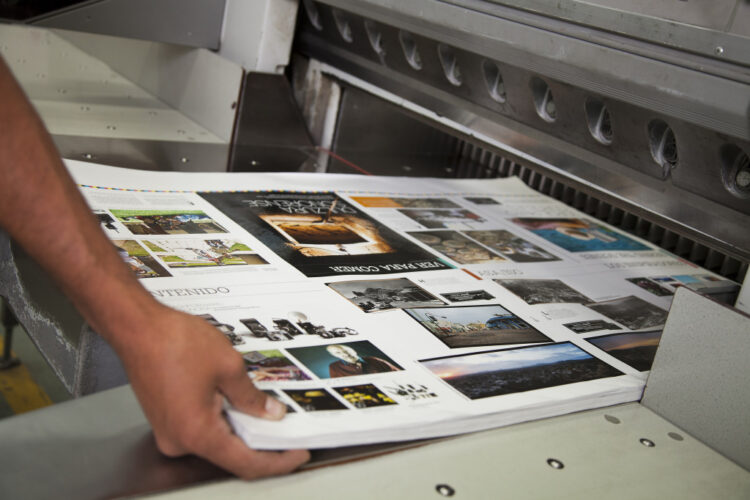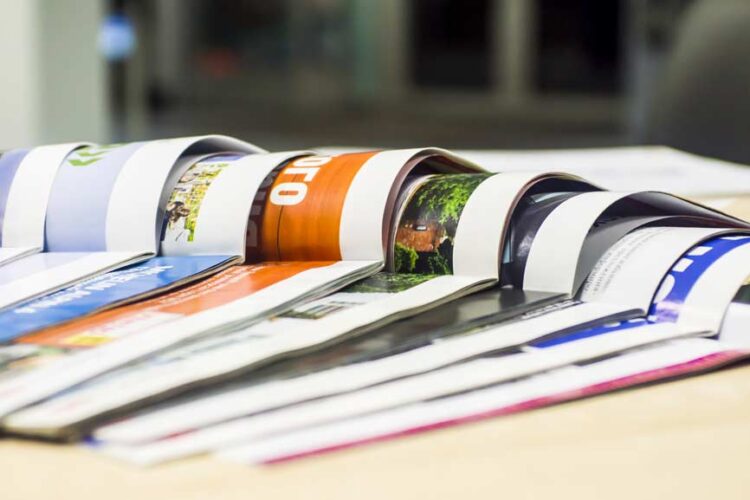Starting a magazine from the ground up is no easy feat – it takes time, dedication and a bit of resources to get it off the ground. But don’t let budgeting worries prevent you from making your dream come true! Here, we offer up some of our best tips for printing an excellent magazine without breaking the bank:
Page Contents
Benefits of Magazine Printing

Source: pinterest.com
It offers a variety of benefits for entrepreneurs or organizations just starting out. The key to a successful magazine is having high quality visuals that grab readers’ attention and making sure your message resonates with the audience. It makes this easier, offering a range of design options that can showcase your content in an engaging way.
It also provides a tangible way to distribute information, which can be helpful for marketing campaigns or introducing new products and services. Additionally, magazine printing gives you control over the size, shape, paper stock and other production specifications to ensure your publication looks professional. Furthermore, if you produce digital versions as well as print copies, you’re able to reach new markets more cost-effectively by replicating low cost online distribution networks such as email newsletters and social media platforms.
Ultimately, magazine printing offers an attractive package that enables you to easily create content that captures people’s attention and works perfectly with any promotional strategy.
Budget-Friendly Printing Options
When you’re just starting out with a magazine project, you want to ensure that you’re getting the best value for your money. Printing is one of the largest expenses associated with magazine printing and it’s important to be familiar with the budget-friendly printing options available.
Many printers offer budget-friendly printing options such as offset lithography, digital short run and web printing. Here is some more information about each to help you make an informed decision about which type of printing will work best for your needs.
- Offset lithography: Offset lithography is a cost effective method for large volume orders, usually 5,000 or more copies of the same material; and is one of the most common print methods for magazines. During offset lithography, images are transferred from film positives or digital files onto metal plates which are then inked and transferred to paper substrate. The result is a professional and high-quality print job on large volumes at an affordable price per piece.
- Digital short run: Digital short run offers affordable print runs as low as 25 copies but can also accommodate larger orders up to 2,500 copies; perfect if your needs don’t require a large volume order but still demand quality prints on demand. This type of printing uses a high-resolution toner transfer technology that allows for quick turnaround times without sacrificing image quality or color accuracy.
- Web Printing: If you need to produce smaller print runs such as 250 – 500 copies or need various layouts or multi-colored elements on each page, this method might be ideal for you when working on a tight budget. Since web prints operate from large rolls of paper instead of individual sheets feeders, blanketing issues are avoided making it easier to produce multi-color artwork quickly and accurately; saving time previously dedicated to sheet changes during other more manual methods. Moreover, economical pricing makes web printing ideal when magazines contain varying page designs along with error free implementation even when publishing inserts in small quantity runs.
Tips for Designing a Magazine

Source: design.tutsplus.com
Designing it can feel daunting, but it doesn’t have to be. With careful planning and research, you can create a successful magazine without blowing your budget. Here are some tips to help you get started:
- Know your audience: Take some time to do research on the demographics of who you want to reach with your magazine. Ask yourself questions like who are they, why would they want to read it, and what could make it more interesting and compelling?
- Plan your content carefully: Write down exactly what content will appear in each issue and decide how much of the content should be devoted to each topic. Be sure to include enough variety so that readers won’t get bored.
- Find photos and illustrations: Invest in high-quality photos or illustrations for each article in the magazine so that it looks professional and engaging for readers. Consider using stock images or working with illustrators or photographers for custom images when necessary or available in your budget range.
- Launch on free platforms first: Save money by launching your new magazine on free digital platforms before investing in print publishing services which create large start-up costs up front. This will also provide a testing ground for seeing if there is enough interest in the material before investing large amounts in printing services later on down the line if needed.
- Use a budget-friendly printing service: When it comes time to print the magazine, look into using more affordable options such as local printing shops instead of larger print companies that charge extra fees for services like color printing and using high quality paper stock when these features may not be necessary right away when just starting out with a publication project.
Preparing the Content for Printing
The content for it is one of the most important elements in deciding the success of your publication. Careful planning, organizing, and preparing stories and other graphic materials are critical to ensuring that the printing process is completed quickly and cost-effectively. Here are some steps to ensure that your content is ready for printing:
- Get organized. Before you even begin creating content, have a plan in mind that outlines the number and type of pages that will be in each issue. This will help you stay on track when it comes to creating content that fits within this framework.
- Create stories. Once you have a plan, begin creating stories or other articles to fill out each issue. Make sure to include photos, graphics, or other visual elements if appropriate in order to make the readers’ experience interesting and informative!
- Do research. Depending on the type of publication you’re producing, do some research into topics related to your magazine before writing any stories or articles so you get accurate information when including references within them.
Conclusion

Source: northsideprinting.com.au
This world can be intimidating when you’re just starting out, but by following the tips outlined above and researching your options thoroughly, you will have the best possible chance at success—and saving money along the way. Keep in mind that there are a variety of options available to you, including cost-effective digital printing, which can help ensure success.





